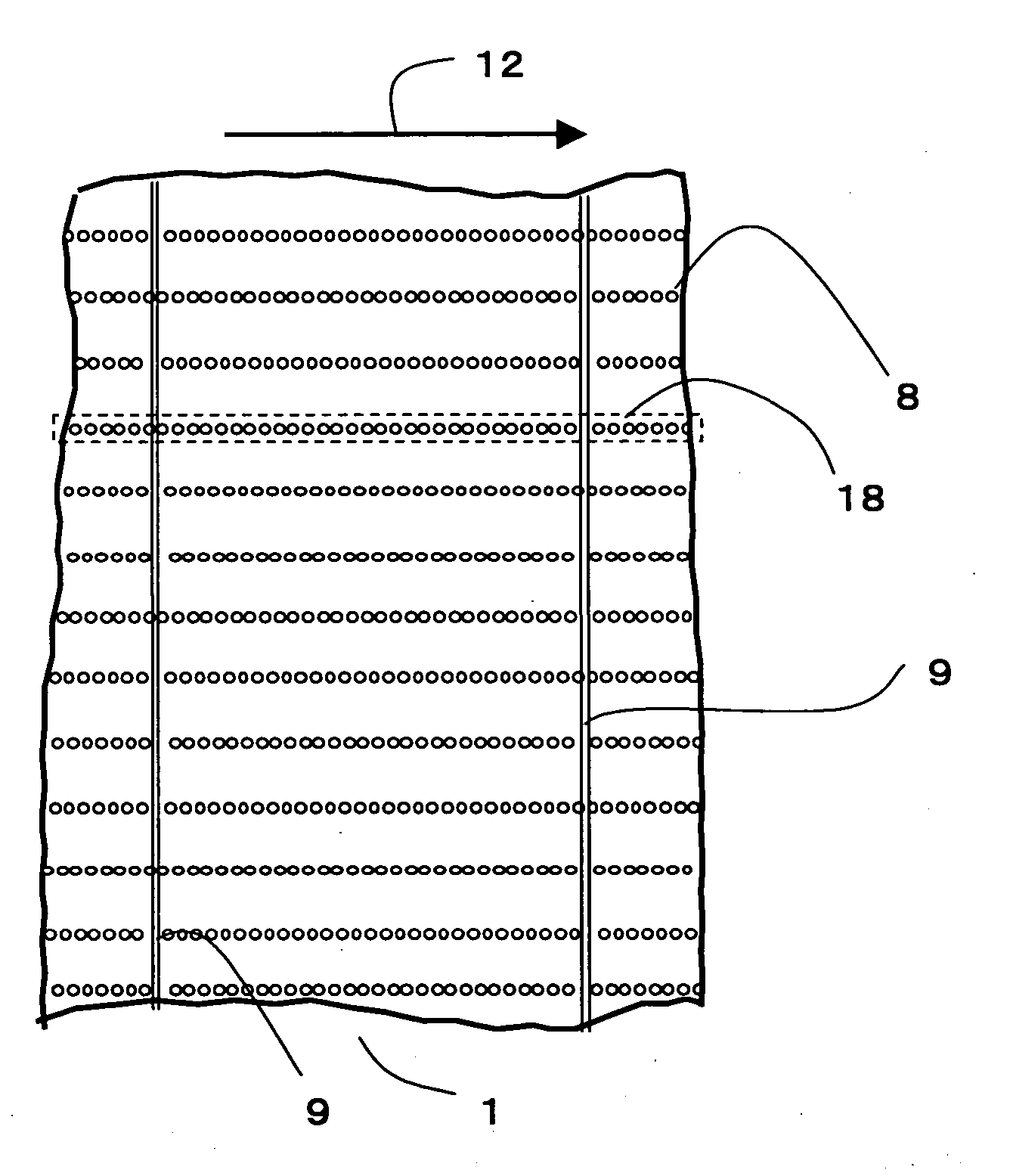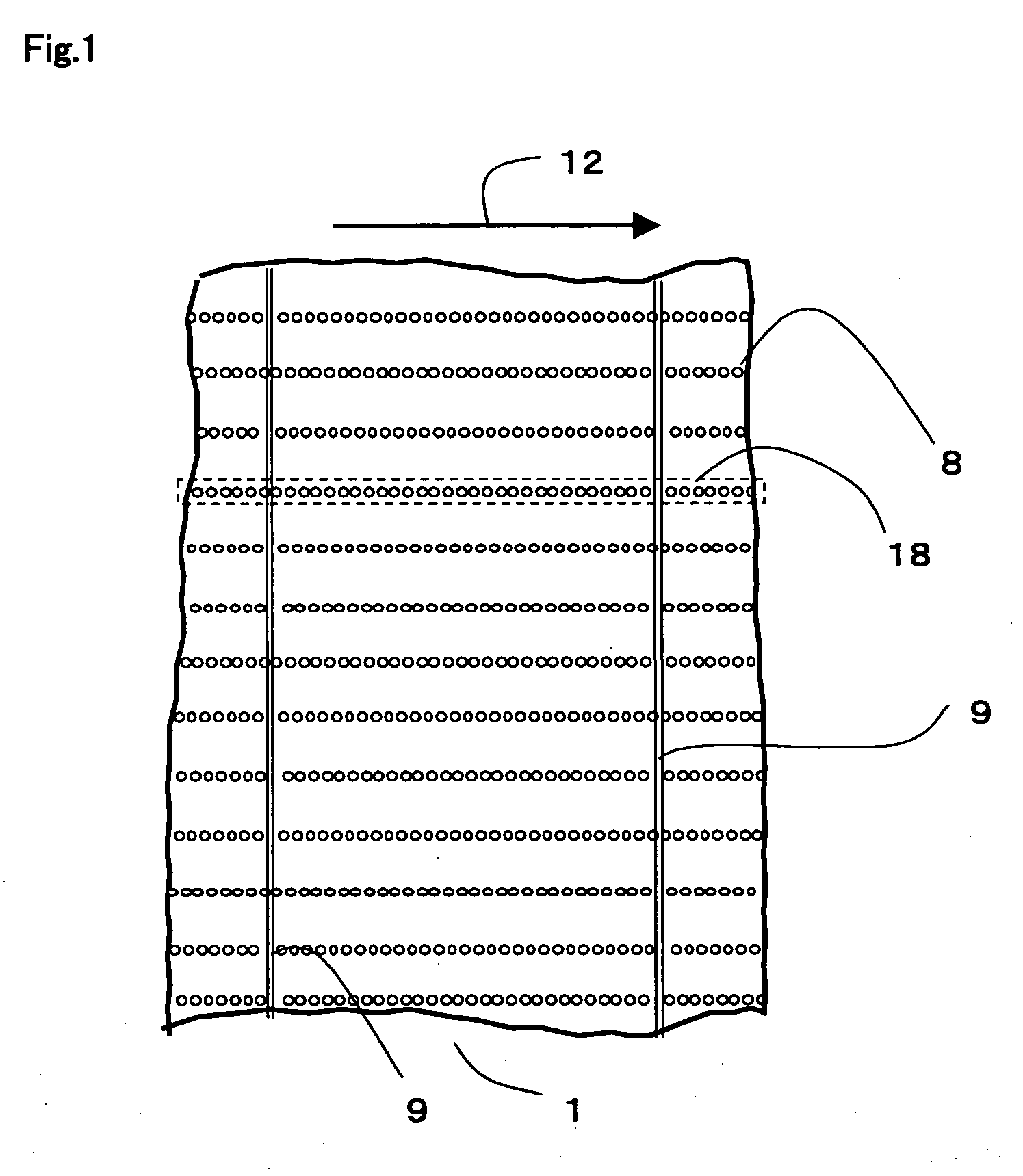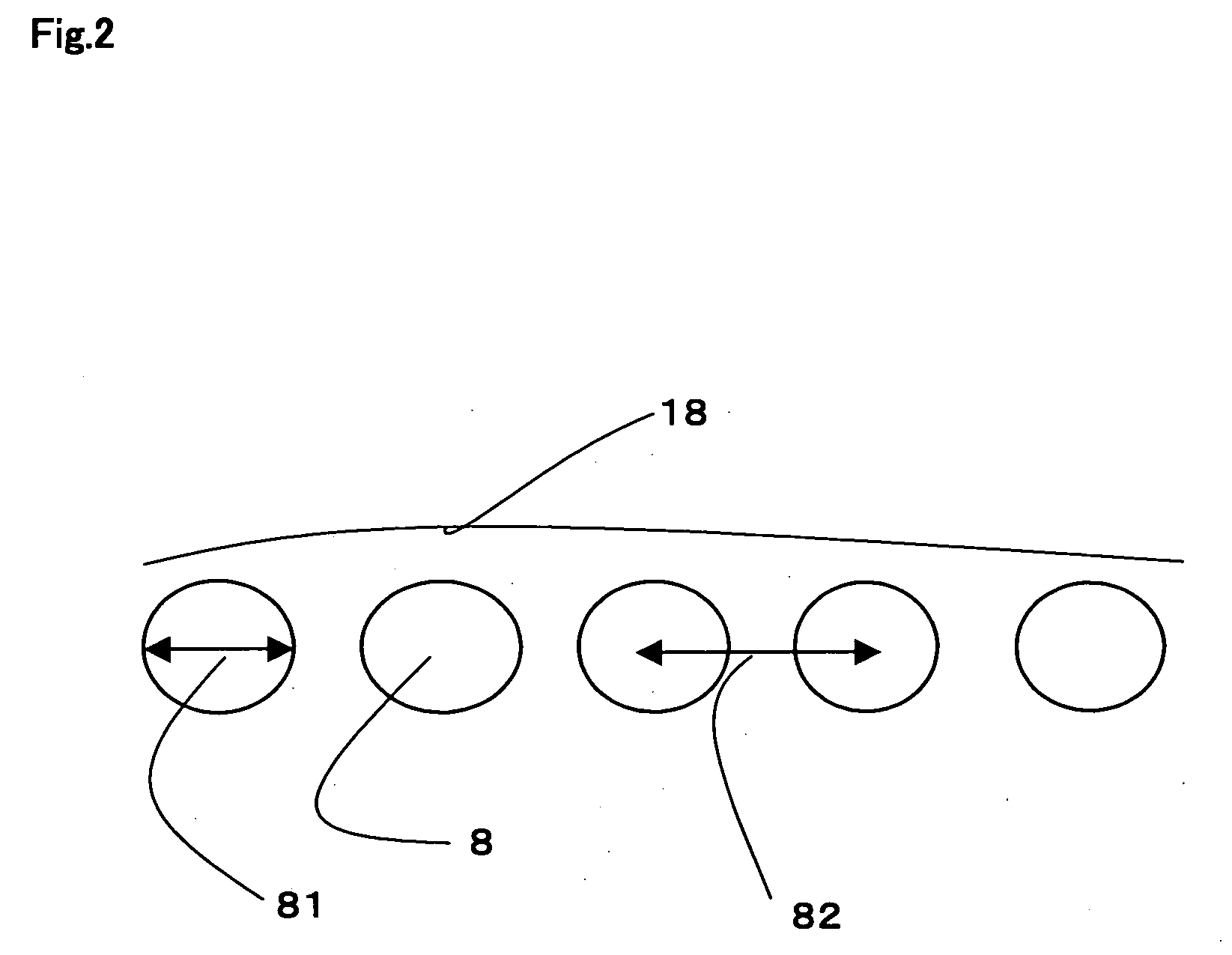Transparent thin-film solar cell module and its manufacturing method
a technology of solar cells and manufacturing methods, applied in semiconductor/solid-state device manufacturing, electrical apparatus, semiconductor devices, etc., can solve the problems of insufficient luminance and resolution of thin-film solar cells, insufficient appearance and output of solar cells, and steep reduction of light transmittance, etc., to achieve high transmittance and weatherability, high conversion efficiency, and high reliability
- Summary
- Abstract
- Description
- Claims
- Application Information
AI Technical Summary
Benefits of technology
Problems solved by technology
Method used
Image
Examples
example 1
[0076] In Example 1, aperture portions 18 each including isolated light-transmissive aperture holes 8 disposed in a straight line were formed by irradiating an integrated thin-film solar cell 11 with laser light incident on the glass substrate 2 side under the following conditions: Q-switching frequency, 1 kHz; power at processing point, 0.30 W; and scanning velocity, 200 mm / s.
[0077] The average diameter 81 of the resulting light-transmissive aperture holes 8 was 170 μm. The distance 82 between the centers of the light-transmissive aperture holes 8 was 200 μm. The average length of non-processed opaque portions between the light-transmissive aperture holes 8 was 30 μm. Consequently, a transparent thin-film solar-cell module 1 having an aperture ratio of 11.3% was obtained. With respect to the photoelectric conversion properties, the open-circuit voltage was 88.8 V, the short-circuit current was 1.008 A, the fill factor was 0.609, and the maximum output was 54.5 W.
[0078] An image w...
example 2
[0079] In Example 2, aperture portions 18 each including isolated light-transmissive aperture holes 8 disposed in a straight line were formed by irradiating an integrated thin-film solar cell 11 with laser light incident on the glass substrate 2 side under the following conditions: Q-switching frequency, 1 kHz; power at processing point, 0.30 W; and scanning velocity, 300 mm / s.
[0080] The average diameter 81 of the resulting light-transmissive aperture holes 8 was 170 μm. The distance 82 between the centers of the light-transmissive aperture holes 8 was 300 μm. The average length of non-processed opaque portions between the light-transmissive aperture holes 8 was 130 μm. Consequently, a transparent thin-film solar-cell module 1 having an aperture ratio of 7.5% was obtained. With respect to the photoelectric conversion properties, the open-circuit voltage was 89.8 V, the short-circuit current was 1.050 A, the fill factor was 0.612, and the maximum output was 57.7 W.
[0081] An image w...
example 3
[0082] In Example 3, aperture portions 18 each including isolated light-transmissive aperture holes 8 disposed in a straight line were formed by irradiating an integrated thin-film solar cell 11 with laser light incident on the glass substrate 2 side under the following conditions: Q-switching frequency, 1 kHz; power at processing point, 0.10 W; and scanning velocity, 100 mm / s.
[0083] The average diameter 81 of the resulting light-transmissive aperture holes 8 was 80 μm. The distance 82 between the centers of the light-transmissive aperture holes 8 was 100 μm. The average length of non-processed opaque portions between the light-transmissive aperture holes 8 was 20 μm. Consequently, a transparent thin-film solar-cell module 1 having an aperture ratio of 5.0% was obtained. With respect to the photoelectric conversion properties, the open-circuit voltage was 89.5 V, the short-circuit current was 1.062 A, the fill factor was 0.623, and the maximum output was 59.2 W.
[0084] An image was...
PUM
 Login to View More
Login to View More Abstract
Description
Claims
Application Information
 Login to View More
Login to View More - R&D
- Intellectual Property
- Life Sciences
- Materials
- Tech Scout
- Unparalleled Data Quality
- Higher Quality Content
- 60% Fewer Hallucinations
Browse by: Latest US Patents, China's latest patents, Technical Efficacy Thesaurus, Application Domain, Technology Topic, Popular Technical Reports.
© 2025 PatSnap. All rights reserved.Legal|Privacy policy|Modern Slavery Act Transparency Statement|Sitemap|About US| Contact US: help@patsnap.com



